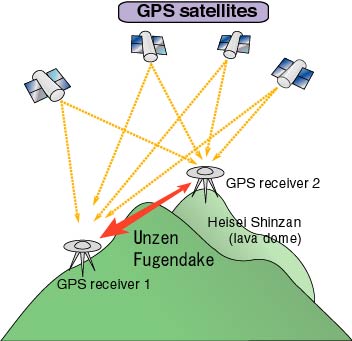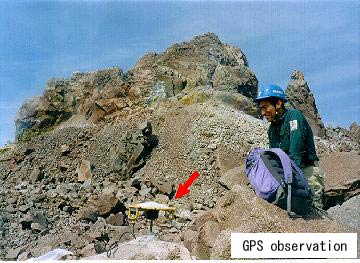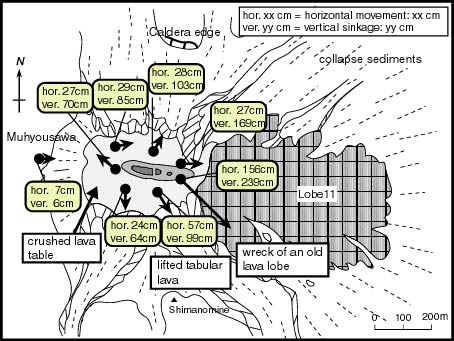  Top of Part 4
Top of Part 4
  Previous p.
Previous p.
  Next page
Next page
|
 GPS (Global Positioning System) GPS (Global Positioning System)
 is a device that gives, is a device that gives,
 for example, a for example, a
 traveling motorcar traveling motorcar
 or airplane or airplane
 its exact position its exact position
 on the Earth on the Earth
 by receiving radio waves by receiving radio waves
 simultaneously from simultaneously from
 four satellites out four satellites out
 of twenty-four which of twenty-four which
 launched by United States. launched by United States.

 By interference By interference
 of the waves received of the waves received
 simultaneously at two different simultaneously at two different
 stations, stations,
 we can measure the distance we can measure the distance
 between these stations between these stations
 exactly to one exactly to one
 centimeter. centimeter.
 Accordingly, GPS is Accordingly, GPS is
 widely employed widely employed
 for geodetic survey and for geodetic survey and
 also for estimation also for estimation
 of a rate of plate movement. of a rate of plate movement.

 At Unzen Volcano At Unzen Volcano
 we set GPS receivers on we set GPS receivers on
 and around the lava dome and kept and around the lava dome and kept
 watching of the movement watching of the movement
 of the lava dome and of the lava dome and
 the surrounding ground. the surrounding ground.
 During explosive periods, During explosive periods,
 we frequently detected we frequently detected
 inflation of the volcano inflation of the volcano
 due to the ascent due to the ascent
 of a large mass of a large mass
 of magma through the vent. of magma through the vent.

 Furthermore, Furthermore,
 we observed that we observed that
 the lava dome was the lava dome was
 shrinking by cooling and shrinking by cooling and
 sliding down on the east sliding down on the east
 slope of the volcano slope of the volcano
 even after the cessation of even after the cessation of
 explosive activity. explosive activity.

|

 Top of Part 4
Top of Part 4

 Previous p.
Previous p.

 Next page
Next page
 GPS (Global Positioning System)
GPS (Global Positioning System)
 is a device that gives,
is a device that gives,
 for example, a
for example, a
 traveling motorcar
traveling motorcar
 or airplane
or airplane
 its exact position
its exact position
 on the Earth
on the Earth
 by receiving radio waves
by receiving radio waves
 simultaneously from
simultaneously from
 four satellites out
four satellites out
 of twenty-four which
of twenty-four which
 launched by United States.
launched by United States.

 By interference
By interference
 of the waves received
of the waves received
 simultaneously at two different
simultaneously at two different
 stations,
stations,
 we can measure the distance
we can measure the distance
 between these stations
between these stations
 exactly to one
exactly to one
 centimeter.
centimeter.
 Accordingly, GPS is
Accordingly, GPS is
 widely employed
widely employed
 for geodetic survey and
for geodetic survey and
 also for estimation
also for estimation
 of a rate of plate movement.
of a rate of plate movement.

 At Unzen Volcano
At Unzen Volcano
 we set GPS receivers on
we set GPS receivers on
 and around the lava dome and kept
and around the lava dome and kept
 watching of the movement
watching of the movement
 of the lava dome and
of the lava dome and
 the surrounding ground.
the surrounding ground.
 During explosive periods,
During explosive periods,
 we frequently detected
we frequently detected
 inflation of the volcano
inflation of the volcano
 due to the ascent
due to the ascent
 of a large mass
of a large mass
 of magma through the vent.
of magma through the vent.

 Furthermore,
Furthermore,
 we observed that
we observed that
 the lava dome was
the lava dome was
 shrinking by cooling and
shrinking by cooling and
 sliding down on the east
sliding down on the east
 slope of the volcano
slope of the volcano
 even after the cessation of
even after the cessation of
 explosive activity.
explosive activity.



